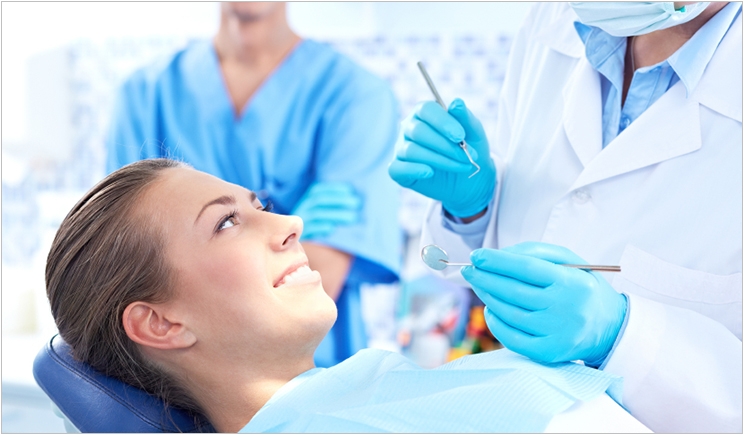
Drs. Brad Bale, Amy Doneen, and David Vigerust stated in a recent study published in the Postgraduate Medical Journal that “high risk periodontal pathogens cause atherosclerosis.” This groundbreaking, peer-reviewed article should forever set the course of our mission to properly diagnose and treat periodontal disease by using predictable solutions to stop the infection. But first, we have to inspire and motivate patients to control their biofilms, demonstrate a different technique to disturb and disrupt the biofilm, and create a healthy oral environment that they can maintain.
Let’s look at inspiration. The WIIFM (what’s in it for me?) question must be answered before patients will change their behavior. For example, Mr. Smith was a new emergency patient who had a loose tooth No. 28. He wanted it out, along with the other 6 lower teeth. Instead, he wanted 4 implants and a denture so he wouldn’t have to worry about his teeth anymore!
When I saw him, I noticed his hands were swollen and he had bent fingers. He said he had rheumatoid arthritis. When I asked how it was, he said it was painful and it made it hard to clean his mouth. His medical history listed 2 strokes as well as the placement of stents. Then I asked what it was like to have a stroke. He said it was terrible with a long recovery, and he didn’t want to go through that again. I had set the stage to introduce the oral-systemic link as a lever to change his attitude and ultimately his behavior when it came to regular dental care and preventive intervention.
When he learned that his loose tooth was caused by a bacterial infection that did not stay in his gums, but spread throughout his body via the bloodstream, and that these bacteria were responsible for systemic disease such as rheumatoid arthritis, heart attacks, and strokes, his attitude changed from disinterest in saving his teeth to one of “What can I do about it?”
I emphasized that these pathogenic bacteria had been in his blood stream constantly for decades, causing disease in his body just as they did with his gums. To support my statements, I quoted studies proving that rheumatoid arthritis and his strokes were likely caused by the very same bacteria that were also loosening his teeth. I gave him a copy of the Postgraduate Medical Journal study with the relevant section highlighted about heart attacks.
Mr. Smith then asked me what he should do because he didn’t want to have another stroke or a worsening of his rheumatoid arthritis. From this point, he had bought into a different type of dental experience—and it wasn’t just going to be about brushing, flossing, and getting his teeth cleaned, because 75% of patients have periodontal disease defined as bleeding on probing despite following these directions.
People believe more of what they see versus what you say, so I did the Papillary Bleeding Score using a GUM Soft-Pick between the teeth at the gumline and saw severe bleeding. Mr. Smith was shocked by the bleeding and this demonstration of infection. Knowing his medical risk and that there was infection, we did an OraVital BiofilmDNA test to look for the type and numbers of high-risk perio pathogens he may have had.
With this information, I selected an antibiotic rinse/spit delivery method to use (Metronidazole, Amoxicillin, and nystatin). Mr. Smith also had scaling and root planing with subgingival irrigation using 10% povidone iodine followed by rinsing for 2 weeks, 3 times a day with the antibiotic mouthwash instead of systemic pill antibiotics.
We demonstrated how he should brush his gums, using a rubber tip to trace the buccal and lingual sulcus firmly and Natural Dentist Stim-U-Dents to clean between the teeth versus flossing. After treatment, all pockets were less than or equal to 3 mm with zero bleeding. Now, Mr. Smith is considering upper and lower implants to restore retention for the upper denture and to replace his missing lowers.
This was an emergency visit that morphed into a new patient who wanted ideal treatment and implants. Imagine the possibilities you may have by simply explaining the importance of the oral-systemic link to your patients.
Dr. Hyland graduated from the University of Toronto in 1976. In addition to private practice, his experience includes teaching at the University of Toronto Faculty of Dentistry, Seneca College, and George Brown College as well as serving as the dental staff member of the North York Hospital. He practices full time at Sheppard Yorkland Dental in Toronto and frequently lectures internationally and writes on a variety of topics related to diagnosis and treatment of periodontal disease as an oral infection, interceptive preventive care, decreasing the oral systemic risk, and breath odor. In 2008, Dr. Hyland’s practice became the first OraVital Certified clinic. Dr. Hyland became CEO of OraVital Inc in 2014. He can be reached at drjhyland@oravital.com.
Disclosure: Dr. Hyland is a founder, president, and shareholder of OraVital Inc, which offers BiofilmDNA testing and antibiotic rinses to treat oral infections.
Related Articles
Collaborative Dental Practice Targets Systemic Healthcare
Oral Microbes Linked to Alzheimer’s Disease
Common Bacterium Triggers Both Periodontitis and Rheumatoid Arthritis











